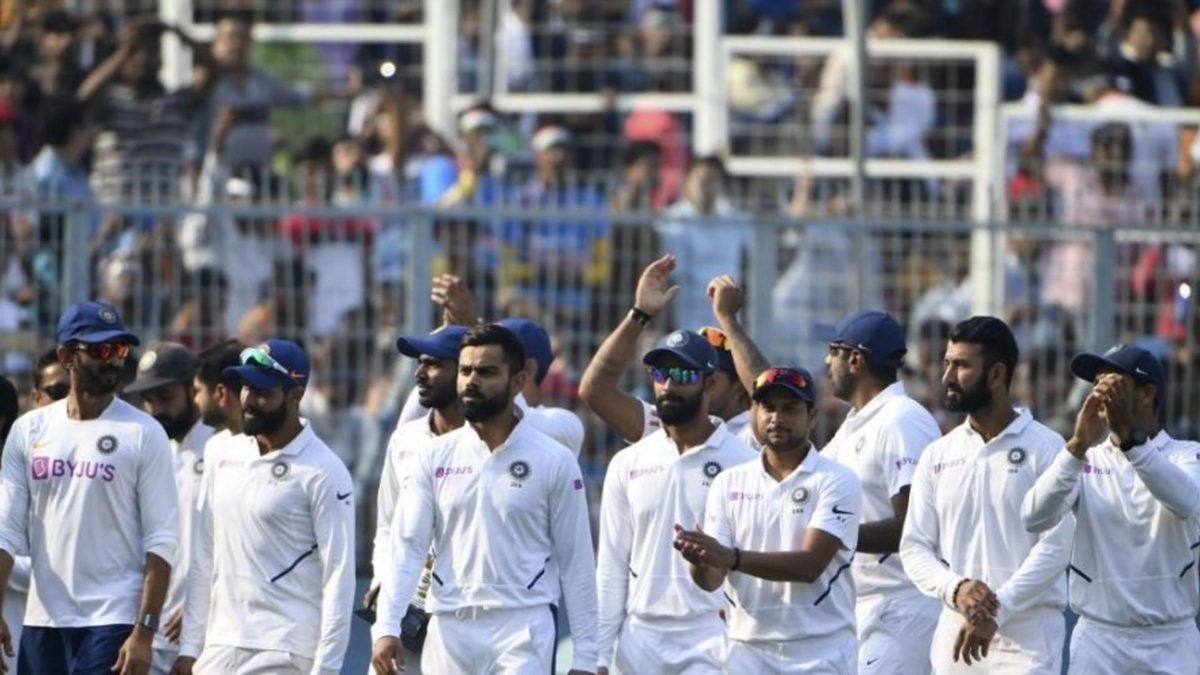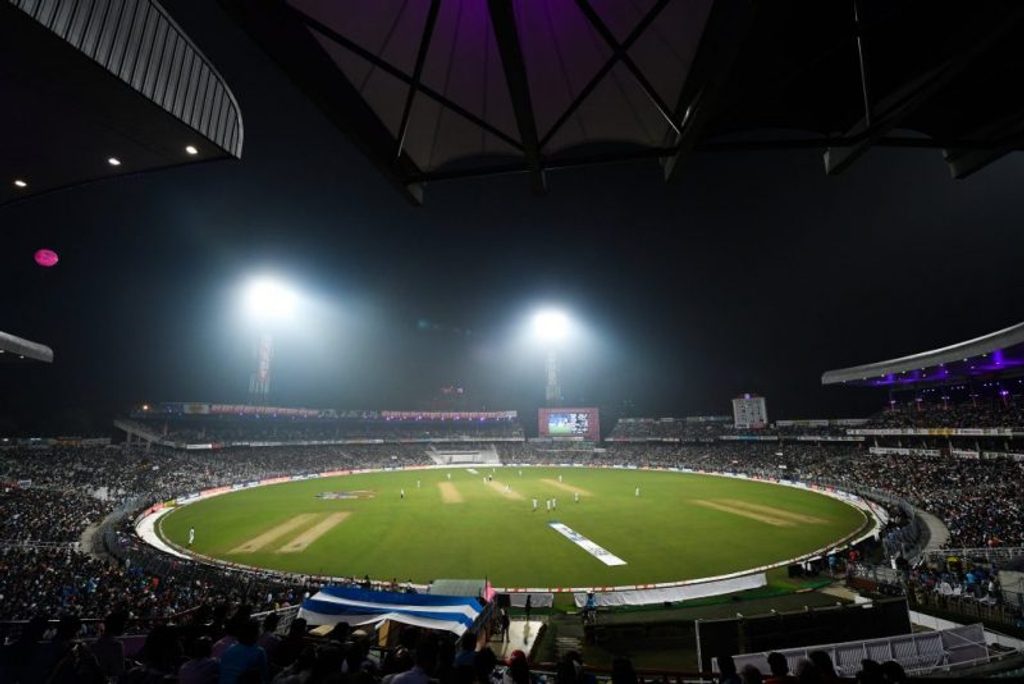
The future of Test cricket will be decided by clear thinking, not rose-tinted glasses, argues Karunya Keshav.
If we had a run for every time anyone said “Test cricket is dying”, while proffering the pink ball, pronounced seam and all, as elixir for its revival in India, we’d have challenged Virat Kohli’s career numbers by now.
This past week, Kolkata, hosting India and Bangladesh for the inaugural day-night Test in India, made a strong case for pink to be The Way Forward. The 42,000 spectators packing the Eden Gardens rafters were the perfect chorus of pink-ball advocates. “You don’t want champions like Kohli, Rohit or Ishant to play in front of empty stands,” Sourav Ganguly, BCCI president and the ambition behind the operation, had said before the Test. And, for once this home season in whites, they didn’t.
The ball seamed. The best fast bowling attack in the world was on the prowl. The sunset kissed the clouds and the stadium was bathed in the blush. The new lord of the cover drive brought up his 27th Test century. His men romped to their fourth consecutive Test win by an innings. It was great. Ignoring the possible head injuries and the two-something day finish, this was exactly how Test cricket was meant to be. Every milestone was breathlessly hailed as historic, but the biggest feat of them all was that people were finally watching Test cricket.
Get the lowdown ahead of the second Test between India and Bangladesh 👇https://t.co/LYCPBB8mNO
— Wisden (@WisdenCricket) November 20, 2019
It was high time, of course, that India embraced this concept, four years after the first day-night Test was played – let the BCCI now take it and run with it. But, when a “relaxed, relieved and happy” Ganguly declares that “this will revive Test cricket”, let’s hope he and his team are aware that the pink ball can only be part of a bigger plan.
For one, serving up day-night Tests as key to the future of Test cricket comes with the assumption that the format is in need of saving. But, at least in India if not elsewhere in the world, obituaries for Test cricket are premature.
In a conversation on Twitter, cricket writer Siddhartha Vaidyanathan pointed to a survey by BARC (Broadcast Audience Research Council) on cricket viewership in India, which makes for interesting reading. If anyone ever doubted it, cricket in India, unlike in several of its outposts, is in no existential crisis: Of all the viewers that watched sports in 2018, 93 per cent watched cricket. And while Test cricket does have less viewership than ODIs or T20 matches (including IPL), the numbers have been rising in the past three years along with the team’s performances. The big-ticket clashes against England and Australia were top draws, but even the India-Bangladesh and India-Sri Lanka series last year showed strong numbers.
Now, this data might be incomplete, and the sample size limited, but the findings do reflect a sentiment the MCC too discovered earlier this year, when 86 per cent of respondents claimed they preferred Test cricket to limited-overs matches. Which raises an important point: On what are we basing the suggestion that Test cricket is on the decline? And how is its decline more dire today than it was half a century ago?
“When we say there were one lakh people at Eden Gardens in 2001, we are missing the point,” Rahul Dravid, the wise man of Indian cricket, pointed out to Economic Times. “At that time, there was no HD television that could guarantee you a better experience at home, there was no cricket on mobile, and if you wanted to catch the action, you had to make it to the ground.”
So, the desired revival is not so much in getting more people to watch cricket, but in getting more of them to watch it in the stadium.
In India, there is little financial incentive for the authorities to work to put bums on the seat. When Byju paid INR 1079 crore for their five-year short sponsorship deal, and Star India forked out a mind-boggling INR 16347.5 crore for the rights to broadcast IPL for five years, the INR 150 that the ticket-buying public in Kolkata paid to be a part of history is as good as the peanuts sold outside the ground. A packed stadium is an experience for the players, and at best good “colour” for the broadcasters, but the spectators aren’t the priority.
However, they need to be. The cricket-viewing experience in India is dismal — this is the board that stubbornly allowed its players and a stadium full of spectators to be subjected to Delhi’s poisonous air — and addressing that, more than the colour of the ball, will decide the sustainability of the sport.
“Basic things like toilets, seating, car parking, need to be looked into — these are things that will draw [crowds],” Dravid added. Kohli, who’s the biggest advocate of Test cricket these days, echoed this argument.
“I think it is very, very crucial to market Test cricket like we do for T20 and one-day cricket,” he said after India’s win at Eden Gardens. “If you create excitement only around T20 and not so much around Test cricket, then in the psyche of the fan there’s already a certain template that’s established. If there’s enough buzz created around Test cricket, then there will be a lot more keenness to come to the stadiums.”
 Eden Gardens was packed for the inaugural pink-ball Test – AFP
Eden Gardens was packed for the inaugural pink-ball Test – AFP
Indian stadiums, for reasons of crowd control, don’t allow water or food to be carried inside. Seating doesn’t always come with shade. In stadiums that are far from the city centre, with no public transport facilities and at the end of a badly lit highway, a day-night Test isn’t going to serve as encouragement for attendance. The experience simply isn’t family friendly.
Having seen efforts outside India to connect with the younger generation, Kohli knows the value of making a day at the cricket an “experience”. “I am a big fan of having more interactive areas for people during the game, like you have in venues when we play abroad,” he said. “There’s something or the other always happening, maybe a play area for kids. These small things will really, really help … Maybe school kids could interact with team India players during lunch or be on the field, play with them.
“It should be an event where you come and experience Test cricket, not just sit there and watch in the hot sun. I think there has to be more for the fans.”
Welcome to pink test ..@JayShah @bcci pic.twitter.com/lk9h9AX7Ox
— Sourav Ganguly (@SGanguly99) November 21, 2019
Despite the captain’s enthusiasm and the team’s success, the exigencies of the international calendar means India will next play a Test at home only a year from now. The future, it would seem, will be on hold till late next year. Among his several good ideas, Kohli has also lent his voice to the calls for fewer of these long gaps and unstructured schedules. Here’s where the suggestion of a fixed calendar and ‘big five’ venues come in. If Test cricket needs to be an “experience”, it has to be something fans plan for. As the captain says: “There has to be enough anticipation.” Build a sports viewing culture. And, there is no reason women’s Tests, too, can’t be a part of this culture.
In the absence of verifiable data, Test cricket has been held up unfairly to standards set by the IPL — which is a phenomenon rather than a format of cricket. Assessed on its own merit, Test cricket in India has plenty going for it: a side riding on remarkable success, a charming captain, cricketing role models up and down the order and on the bench, sporting pitches, fewer draws this year than ever before — all making for a very exciting and very watchable sport. Test cricket in India doesn’t need the pink-ball to save it: it just needs some all-round love and encouragement.








